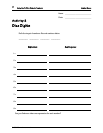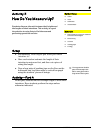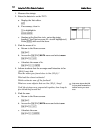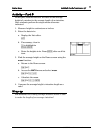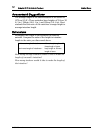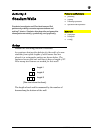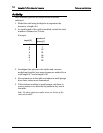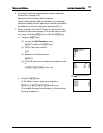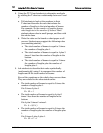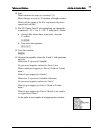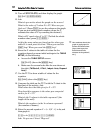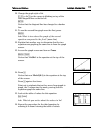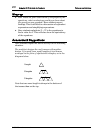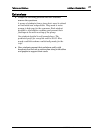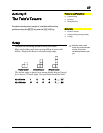
16
Using the TI-73: A Guide for Teachers
Patterns and Relations
© 1998 T
EXAS
I
NSTRUMENTS
I
NCORPORATED
8. Using the TI-73, lead students to alternative methods
by reading the T-chart as a relationship between X and
Y.
a. Tell students to look at the numbers in their
T-chart and describe the rule that relates the
number of lengths to the total number of beams.
For example, As the number of lengths change,
what happens to the number of beams? Have
students share rules in small groups, and then with
the whole class.
b. Write the rules on the board or chart paper so all
can see. Students may suggest the following rules
(or something similar):
• The total number of beams is equal to 3 times
the number of lengths plus 1.
• The total number of beams is equal to 4 plus 3
times 1 less than the number of lengths in the
bottom.
• The total number of beams is equal to 2 times
the number of lengths plus the number of
lengths plus 1.
9. Ask students to describe their rules symbolically
(mathematically) using L to represent the number of
lengths and B the total number of beams.
Record the equations so the whole class can see them.
They are related to the rules stated earlier.
• The total number of beams is equal to 3 times the
number of lengths plus 1.
B is 3 times L plus 1.
B = 3L + 1
• The total number of beams is equal to 4 plus 3
times 1 less than the number of lengths in the
bottom.
B is 4 plus 3 times L minus 1.
B = 4 + 3(L-1)
• The total number of beams is equal to 2 times the
number of lengths plus the number of lengths plus
1.
B is 2 times L plus L plus 1.
B = 2L + L + 1



